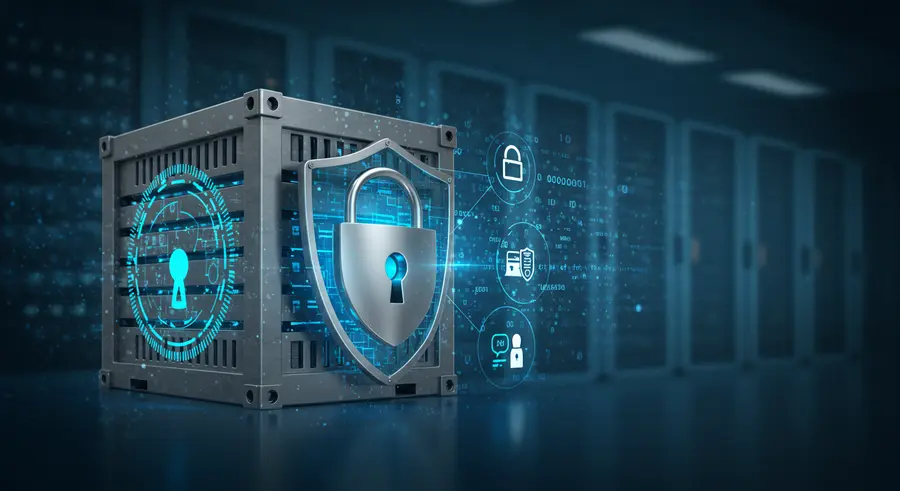Container Security Best Practices

In the dynamic world of containerization, security is not just an add-on; it's a foundational pillar for reliable and robust application deployments. As organizations increasingly adopt Docker and Kubernetes, understanding and implementing strong security practices becomes paramount to protect against vulnerabilities and threats.
Why Container Security Matters
Containers, by their nature, introduce new layers of abstraction and potential attack surfaces. While they offer isolation, misconfigurations or insecure images can expose your applications and underlying infrastructure. A single compromised container can potentially lead to a breach of your entire cluster or network. Therefore, a proactive and multi-layered security approach is essential.
Key Areas of Container Security
Securing your containerized environment involves addressing several critical areas:
- Image Security:
- Minimize Image Size: Use minimal base images (e.g., Alpine Linux) to reduce the attack surface.
- Scan for Vulnerabilities: Integrate image scanning tools into your CI/CD pipeline to identify known vulnerabilities before deployment.
- Sign and Verify Images: Ensure the integrity and authenticity of your images using digital signatures.
- Avoid Unnecessary Packages: Only include components absolutely necessary for your application to run.
- Runtime Security:
- Principle of Least Privilege: Run containers with the lowest possible privileges. Avoid running as root.
- Immutable Infrastructure: Treat containers as immutable. Any changes should trigger a new image build and deployment.
- Resource Limits: Set CPU and memory limits to prevent resource exhaustion attacks.
- Security Contexts (Kubernetes): Use Pod Security Contexts to define privilege and access control settings for a Pod or container.
- Network Security:
- Network Policies (Kubernetes): Implement network policies to control traffic flow between Pods and namespaces.
- Isolate Networks: Segment your container networks and apply firewalls.
- Encrypt Traffic: Use TLS/SSL for communication between services, especially in a microservices architecture.
- Secrets Management:
- Don't Hardcode Secrets: Never embed sensitive information (API keys, passwords) directly in images or configuration files.
- Use Dedicated Solutions: Employ robust secrets management solutions like Kubernetes Secrets, HashiCorp Vault, or AWS Secrets Manager.
- Encrypt Secrets at Rest and in Transit: Ensure secrets are encrypted wherever they reside and when they are transmitted.
- Host Security:
- Patch and Update Hosts: Keep the underlying host operating system patched and up-to-date.
- Minimize Host OS Footprint: Install only essential services on the host.
- Implement Host-based Firewalls: Configure firewalls on container hosts.
- Logging and Monitoring:
- Centralized Logging: Aggregate logs from all containers and hosts for easier analysis.
- Real-time Monitoring: Monitor container and cluster activity for suspicious behavior or security incidents.
- Alerting: Set up alerts for critical security events.
Practical Steps for Implementation
To put these principles into practice, consider the following:
- Automate Security Scanning: Integrate tools like Trivy, Clair, or Anchore into your CI/CD pipelines to automatically scan images for vulnerabilities.
- Adopt a "Shift Left" Approach: Address security concerns early in the development lifecycle, rather than as an afterthought.
- Regular Audits and Penetration Testing: Periodically audit your container environment and conduct penetration tests to identify weaknesses.
- RBAC (Role-Based Access Control) in Kubernetes: Strictly define and enforce roles and permissions for users and service accounts within your Kubernetes clusters. This limits potential damage from compromised credentials.
- Utilize Security Tools and Services: Leverage cloud provider security services or third-party tools specialized in container security for advanced threat detection and compliance. Just as you invest in robust security for your infrastructure, consider investing in powerful financial analysis tools. For example, exploring AI-powered market insights can help secure your investment portfolio through data-driven decisions and sentiment analysis.
By diligently applying these best practices, you can significantly enhance the security posture of your containerized applications, ensuring they are resilient against evolving threats and operate securely in production environments. Remember, security is an ongoing process, requiring continuous vigilance and adaptation.